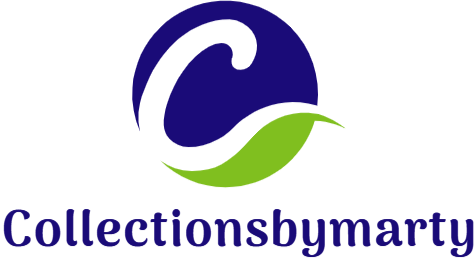Interior lighting plays a crucial role in the overall design and ambiance of a space. It has the power to transform a room, creating a mood and atmosphere that can enhance the functionality and aesthetics of any space. From providing task lighting for specific activities to setting the right mood for relaxation or entertainment, interior lighting is an essential element in creating a well-designed and inviting space.
The Importance of Interior Lighting in Design
The impact of lighting Koozilla on the mood and ambiance of a space cannot be overstated. The right lighting can create a warm and inviting atmosphere, while poor lighting can make a room feel cold and unwelcoming. Different types of lighting fixtures, such as chandeliers, pendant lights, and recessed lighting, can be used to create different effects and enhance the overall design of a space.
In addition to setting the mood, proper lighting is also essential for functionality and safety. Adequate task lighting is necessary for activities such as reading, cooking, or working, while ambient lighting provides overall illumination for a room. In areas such as staircases or hallways, proper lighting is crucial for safety to prevent accidents and ensure easy navigation.
Types of Interior Lighting Fixtures to Elevate Your Space
There are various types of interior lighting fixtures that can elevate the design of your space. Chandeliers are often used as statement pieces in grand entrances or dining rooms, adding elegance and sophistication to the space. Pendant lights are versatile fixtures that can be used in various areas of the home, such as above kitchen islands or dining tables, to provide focused task lighting.
Recessed lighting is another popular choice for its sleek and minimalist design. It is often used in kitchens, bathrooms, or hallways to provide general illumination without taking up much visual space. Wall sconces are another option that can add both style and functionality to a room. They can be used as accent lighting to highlight artwork or architectural features, or as task lighting in areas such as bedside reading lights.
Choosing the Right Lighting for Each Room
The lighting needs of each room can vary depending on its function and design. In the living room, a combination of ambient, task, and accent lighting is usually required. Ambient lighting can be achieved through overhead fixtures or floor lamps, while task lighting can be provided by table lamps or reading lights. Accent lighting can be used to highlight artwork or architectural features.
In the kitchen, bright and focused task lighting is essential for food preparation and cooking. Under-cabinet lighting or pendant lights above the kitchen island can provide the necessary illumination. In the bedroom, a combination of ambient lighting and bedside reading lights is usually desired. Dimmable lights can also be used to create a relaxing atmosphere for sleep.
The Impact of Color Temperature on Interior Lighting
Color temperature refers to the warmth or coolness of light, measured in Kelvin (K). It can greatly affect the look and feel of a space. Warm light, with a color temperature below 3000K, creates a cozy and inviting atmosphere, while cool light, with a color temperature above 5000K, creates a bright and energizing ambiance.
When selecting the right color temperature for different areas of the home, it is important to consider the function of the space and the desired mood. Warm light is often preferred in living rooms and bedrooms to create a relaxing and comfortable environment. Cool light is more suitable for task-oriented areas such as kitchens or home offices, where bright and focused illumination is needed.
Layering Interior Lighting for Maximum Effect

Layering lighting in a space involves using different types of fixtures at different heights and angles to create depth and dimension. This technique not only enhances the overall design of a space but also provides flexibility in terms of adjusting the lighting levels for different activities or moods.
To achieve maximum effect, it is recommended to use a combination of ambient, task, and accent lighting. Ambient lighting can be provided by overhead fixtures or recessed lighting, while task lighting can be achieved through table lamps or pendant lights. Accent lighting can be used to highlight artwork or architectural features.
Statement Lighting Fixtures for a Bold Design Statement
Statement lighting fixtures can make a bold design statement and become the focal point of a room. They can add drama, style, and personality to any space. Examples of statement lighting fixtures include oversized chandeliers, unique pendant lights, or sculptural floor lamps.
When choosing a statement lighting fixture, it is important to consider the scale and proportion of the room. A large chandelier may be suitable for a grand entrance or dining room with high ceilings, while a unique pendant light can add interest to a smaller space such as a bedroom or bathroom.
Energy-Efficient Lighting Options for a Sustainable Home
Energy-efficient lighting is not only beneficial for the environment but also for reducing energy consumption and saving money on utility bills. LED (light-emitting diode) lights are one of the most energy-efficient options available. They use less energy and last longer than traditional incandescent bulbs.
Other energy-efficient options include compact fluorescent lamps (CFLs) and halogen incandescent bulbs. These bulbs use less energy than traditional incandescent bulbs and have a longer lifespan. Additionally, installing dimmer switches or motion sensors can further reduce energy consumption by allowing you to adjust the lighting levels based on your needs.
Creative Lighting Ideas for Small Spaces
Lighting small spaces can be challenging due to limited space and natural light. However, with some creativity and strategic placement of lighting fixtures, small spaces can be well-lit and visually appealing.
One creative idea is to use mirrors to reflect natural light and create the illusion of a larger space. Placing a mirror opposite a window can help bounce light around the room. Another idea is to use wall sconces or recessed lighting to provide ambient lighting without taking up valuable floor or surface space.
Lighting as a Functional and Decorative Element
Lighting can serve both functional and decorative purposes in a space. In addition to providing illumination, lighting fixtures can also enhance the overall design and aesthetics of a room.
For example, a chandelier can add elegance and sophistication to a dining room, while a pendant light can become a focal point in a kitchen. Table lamps can provide task lighting while also adding style and personality to a bedside table or desk. Wall sconces can serve as both accent lighting and decorative elements in a hallway or living room.
Hiring a Professional Lighting Designer for a Customized Look
For those who want a truly customized look and professional expertise, hiring a lighting designer can be beneficial. A lighting designer can assess the specific needs and requirements of your space and create a lighting plan that is tailored to your preferences and budget.
When selecting a lighting designer, it is important to consider their experience, portfolio, and communication style. It is also helpful to have a clear vision of what you want to achieve with your lighting design and communicate that to the designer.
Interior lighting is an essential element in design that can greatly impact the mood, functionality, and aesthetics of a space. By understanding the different types of lighting fixtures, color temperature, and layering techniques, you can create a well-designed and inviting space that meets your specific needs and preferences.
Whether you choose statement lighting fixtures for a bold design statement or energy-efficient options for a sustainable home, experimenting with different lighting options can elevate your space and create an atmosphere that is both functional and visually appealing. So go ahead, get creative with your interior lighting and transform your space into something truly extraordinary.


